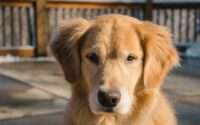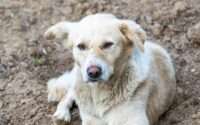Are Huskies Good with Kids? The Ultimate Husky-Child Relationship Guide!
Siberian Huskies, with their striking appearance and captivating blue eyes, have long been revered as one of the most beautiful dog breeds in the world. But beyond their stunning looks lies a breed with a rich history and unique personality traits. In this comprehensive guide, we’ll delve into the intriguing question: Are Huskies good with kids?
Understanding the Siberian Husky Breed
To truly understand the dynamics between Huskies and children, it’s essential to first grasp the essence of the Siberian Husky breed. Originating from the harsh and unforgiving terrain of Siberia, these dogs were bred by the Chukchi people for their exceptional endurance and stamina as sled dogs.
Siberian Huskies are renowned for their friendly and outgoing nature. They possess a strong sense of loyalty to their family members and are known to be affectionate and gentle with children. However, their independent streak and high energy levels require careful consideration when introducing them to young ones.
In the next sections, we’ll explore the temperament and behavior of Huskies, shedding light on their compatibility with children and offering insights into successful Husky-child interactions.
Temperament and Behavior of Huskies
Siberian Huskies are known for their unique temperament, which plays a crucial role in their interactions with children. Here are some key characteristics to consider:
- Friendly and Outgoing: Huskies are typically sociable and enjoy the company of people, including children. Their friendly disposition often makes them eager to engage in play and activities with kids.
- High Energy Levels: Huskies have boundless energy and require regular exercise to stay happy and healthy. While this trait can make them excellent playmates for active children, it’s important to ensure they get enough physical activity to prevent boredom and destructive behavior.
- Independent Nature: Huskies have a strong independent streak, which can sometimes be mistaken for stubbornness. While they are loyal to their families, they also have a mind of their own and may not always obey commands immediately.
Understanding these temperament traits is essential for creating a harmonious environment for Huskies and children to coexist.
Huskies and Children: Factors to Consider
When considering whether Huskies are good with kids, several factors come into play. Here are some key considerations:
- Age of the Children: Huskies may interact differently with children of varying ages. While they can be gentle and patient with older, more responsible children, they may need supervision around younger, more rambunctious kids.
- Training and Socialization: Proper training and early socialization are crucial for Huskies to learn appropriate behavior around children. Teaching them basic commands and exposing them to different environments can help them become well-adjusted family pets.
- Supervision: Adult supervision is essential whenever Huskies and children are interacting. Even the most well-behaved Husky can become overwhelmed or startled in certain situations, so it’s important to monitor their interactions closely to prevent accidents or misunderstandings.
Considering these factors and taking proactive steps to ensure positive interactions, Huskies can indeed be wonderful companions for children.
Benefits of Huskies as Family Pets
Huskies bring a unique set of qualities to the table that can make them excellent family pets. Here are some of the benefits of having a Husky in your household:
- Loyalty and Protective Instincts: Huskies are fiercely loyal to their families and often develop strong bonds with children. They have a protective instinct that can provide an added sense of security for children, making them feel safe and loved.
- Playful Nature: Huskies are known for their playful and energetic personalities, which can make them ideal playmates for children. Whether it’s a game of fetch in the backyard or a run around the park, Huskies are always up for adventure and fun.
- Adaptability: Despite their origins as sled dogs in the Arctic, Huskies are surprisingly adaptable to different living environments. Whether you live in a spacious suburban home or a cozy city apartment, Huskies can thrive as long as they receive adequate exercise and mental stimulation.
- Companionship: Huskies crave companionship and enjoy being part of a family unit. They thrive on attention and affection from their human companions, making them loving and devoted family pets.
Challenges of Owning a Husky with Kids
While Huskies can make wonderful family pets, there are also some challenges to consider when owning a Husky with kids:
- High Prey Drive: Huskies have a strong prey drive, which can pose a risk to small pets such as cats or rabbits. It’s important to supervise interactions between Huskies and smaller animals to prevent accidents.
- Escapism: Huskies are notorious escape artists and may attempt to roam if given the opportunity. This behavior can be concerning, especially in households with young children who may inadvertently leave doors or gates open.
- Stubbornness: Huskies are known for their independent nature and can be stubborn at times. This trait can make training more challenging, especially for novice dog owners or families with young children who may struggle to establish authority.
- Exercise Needs: Huskies have high exercise needs and require plenty of physical activity to keep them mentally and physically stimulated. This can be a challenge for busy families with young children who may not have the time or energy to meet their Husky’s exercise requirements.
Families can foster a positive and harmonious relationship between their Husky and children by acknowledging these challenges and taking proactive measures to overcome them.
Tips for Introducing a Husky to Children
Introducing a Husky to children requires careful consideration and planning to ensure a positive and safe interaction. Here are some tips for a successful introduction:
- Start Slow: Begin by introducing your Husky to children in a calm and controlled environment. Allow both parties to become familiar with each other’s presence before attempting any physical interaction.
- Supervise Interactions: Always supervise interactions between your Husky and children, especially during the initial introduction. This will allow you to intervene if necessary and prevent any potential conflicts or accidents.
- Teach Children Proper Handling: Educate children on how to approach and interact with your Husky safely and respectfully. Teach them to avoid sudden movements or loud noises that may startle or agitate the dog.
- Set Boundaries: Establish clear boundaries for both your Husky and children to ensure mutual respect and safety. Teach your Husky basic commands such as “sit” and “stay,” and encourage children to respect your dog’s space and avoid rough play.
- Be Patient: Introducing a Husky to children may take time and patience, especially if either party is apprehensive or nervous. Take things slow and allow everyone to adjust at their own pace.
By following these tips, you can help facilitate a positive and harmonious relationship between your Husky and children.
Real-Life Experiences: Stories from Husky Owners with Children
What better way to gain insight into the dynamics between Huskies and children than to hear from real-life Husky owners? Here are some stories and experiences shared by Husky owners who have children:
- Emma’s Story: “When we first brought home our Husky, Luna, we were a bit apprehensive about how she would interact with our two young children. However, Luna quickly proved herself to be gentle and patient with them, and she’s become an integral part of our family.”
- Mark’s Experience: “Having grown up with Huskies, I always knew I wanted one for my own family. Now, with two young kids of my own, our Husky, Rocky, brings endless joy and laughter into our home. He’s incredibly gentle with the kids and loves nothing more than joining in their adventures.”
- Sarah’s Advice: “As a Husky owner and mother of three, I’ve learned that patience and consistency are key when introducing a Husky to children. By setting clear boundaries and establishing a routine, our Husky, Max, and our kids have formed a strong bond built on mutual trust and respect.”
These real-life experiences highlight the joys and challenges of owning a Husky with children, offering valuable insights and advice for prospective Husky owners.
Conclusion
In conclusion, the question of whether Huskies are good with children is not a simple yes or no answer. While Huskies possess many positive traits that make them suitable companions for families with children, such as loyalty, playfulness, and adaptability, there are also challenges to consider, including their high prey drive, escapism tendencies, and stubbornness.
By understanding the temperament and behavior of Huskies, considering important factors such as age, training, and supervision, and implementing practical tips for successful interactions, families can create a harmonious environment where Huskies and children can coexist happily and safely.
While owning a Husky with children may require patience, consistency, and dedication, the rewards of a loving and mutually beneficial relationship between Huskies and children are well worth the effort.
Frequently Asked Questions
Are Huskies good with kids of all ages?
While Huskies can be excellent companions for children, they may interact differently with kids of varying ages. It’s essential to consider factors such as the child’s age and the Husky’s temperament when introducing them.
Do Huskies have a high prey drive that may pose a risk to small children?
Yes, Huskies have a natural prey drive, which means they may view smaller animals or moving objects as prey. It’s crucial to supervise interactions between Huskies and small children to prevent accidents.
Do Huskies require a lot of exercise, and how does this affect their compatibility with children?
Yes, Huskies are highly energetic dogs that require plenty of exercise to stay happy and healthy. While their high energy levels can make them fun playmates for active children, it’s important to ensure they get enough physical activity to prevent boredom and destructive behavior.
Can Huskies be trained to behave well around children?
Yes, with proper training and socialization, Huskies can learn to behave appropriately around children. Consistent training and positive reinforcement are key to teaching Huskies how to interact safely and respectfully with kids.
Are Huskies prone to aggression towards children?
Huskies are not inherently aggressive towards children, but like any dog breed, their behavior can be influenced by factors such as training, socialization, and individual temperament. Proper supervision and training are essential for ensuring positive interactions between Huskies and children.
How should I introduce my Husky to my children for the first time?
Introduce your Husky to your children gradually in a calm and controlled environment. Allow both parties to become familiar with each other’s presence before attempting any physical interaction, and always supervise their interactions closely.
Can Huskies be left alone with children unsupervised?
It’s not advisable to leave Huskies alone with children unsupervised, especially during the initial stages of their relationship. Adult supervision is essential to prevent accidents or misunderstandings and ensure the safety of both the Husky and the child.
Are there any specific training techniques I should use to teach my Husky how to behave around children?
Positive reinforcement training techniques, such as reward-based training and clicker training, can be effective for teaching Huskies how to behave around children. Consistency, patience, and gentle correction are key to shaping desired behaviors.
What are some signs that indicate my Husky is not comfortable around children?
Signs that indicate your Husky may be uncomfortable around children include growling, barking, lip licking, and avoidance behaviors. It’s essential to respect your Husky’s boundaries and remove them from the situation if they show signs of stress or discomfort.
Are there any precautions I should take when introducing my Husky to a new baby in the family?
When introducing a new baby to your Husky, it’s essential to supervise their interactions closely and never leave them alone together. Gradually acclimate your Husky to the baby’s presence and provide positive reinforcement for calm and gentle behavior.




